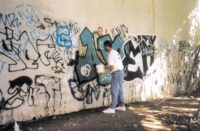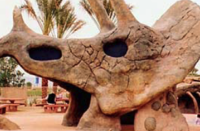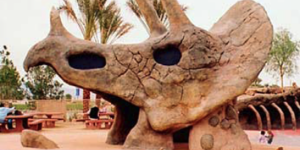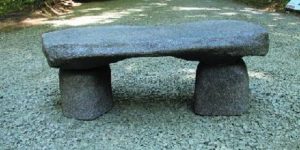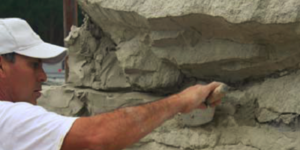In general, if you work with concrete now, you likely have the tools you’ll need to create synthetic rocks, but here are a few items that might make the job a little easier.
Start with some proper training, especially if creating synthetic rock is new for you, or you’re moving up in the scale of your projects. JPJ Technologies L.L.C. has a wide range of training videos — from beginner to intermediate — to get you started. JPJ Technologies also offers advanced hands-on training classes in a variety of techniques, applications and business operation methods at its Arizona facility. You can learn about re-bar and lath construction, molded panels, faux rock retaining walls, landscape installation for water features and more. Advanced training classes include free technical support and field consultation for one year.
Texture mats for creating synthetic rocks are available from a variety of sources, but why stop at just emulating rocks? Breck Viley, co-owner of The Rock Garden in Santa Ana, California, a company that designs and fabricates a variety of rock texture mats, reports a new line has just been released that features fossil texture and tree bark, ideal for synthetic fallen trees — or upright ones. Do any creative interior and exterior applications come to mind?
Many synthetic rock contractors don’t use admixes. However, using a mix water conditioner to help make concrete consistent is becoming more popular in faux rock applications across the country, reports David Johnson, owner of Applied Concrete Technology Inc. in Grayslake, Illinois. The maker of Protecrete says the conditioner uses more of the cement in the mix and stops segregation and cracking problems. “The biggest thing with mix water conditioner is it makes the mix homogenous, with no segregation of aggregates, so it cures evenly from top to bottom with no crusting.”
Use of a densifier can also be beneficial, Johnson says. “It becomes a permanent part of the concrete, hydrating unused cement inside the concrete. [It] helps make the porosity of the concrete consistent across pours.”
Instead of hand coloring, Duraspeck, an exterior grade product designed for use on the exterior of buildings for creating stone and marble finishes, might do the trick more quickly in some synthetic rock applications. Tim Kearney, vice president and national sales manager at Multicolor Specialties Inc. in Cicero, Illinois, says the product was not designed for use in an abusive environment or where it will be submerged, but in a landscape environment, with occasional water (from rain or sprinkler system), it would probably work well. The company can make virtually any kind of color combination using 18 stock fleck colors. “It’s typically designed as a larger particle material so as to be seen at a greater distance,” he explains. It can be applied with standard air spray equipment: pressure pot, conventional spray gun or compressor.

